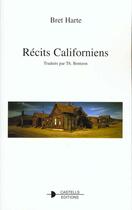-
Nombre de pages : (-)
-
Collection :
(-)
-
Genre :
(-)
-
Thème :
Non attribué
-
Prix littéraire(s) :
(-)
Résumé:
On October 10, 1856, about four hundred people were camped in Tasajara Valley, California. It could not have been for the prospect, since a more barren, dreary, monotonous, and uninviting landscape never stretched before human eye; it could not have been for convenience or contiguity, as the... Voir plus
On October 10, 1856, about four hundred people were camped in Tasajara Valley, California. It could not have been for the prospect, since a more barren, dreary, monotonous, and uninviting landscape never stretched before human eye; it could not have been for convenience or contiguity, as the nearest settlement was thirty miles away; it could not have been for health or salubrity, as the breath of the ague-haunted tules in the outlying Stockton marshes swept through the valley; it could not have been for space or comfort, for, encamped on an unlimited plain, men and women were huddled together as closely as in an urban tenement-house, without the freedom or decency of rural isolation; it could not have been for pleasant companionship, as dejection, mental anxiety, tears, and lamentation were the dominant expression; it was not a hurried flight from present or impending calamity, for the camp had been deliberately planned, and for a week pioneer wagons had been slowly arriving; it was not an irrevocable exodus, for some had already returned to their homes that others might take their places
Donner votre avis









